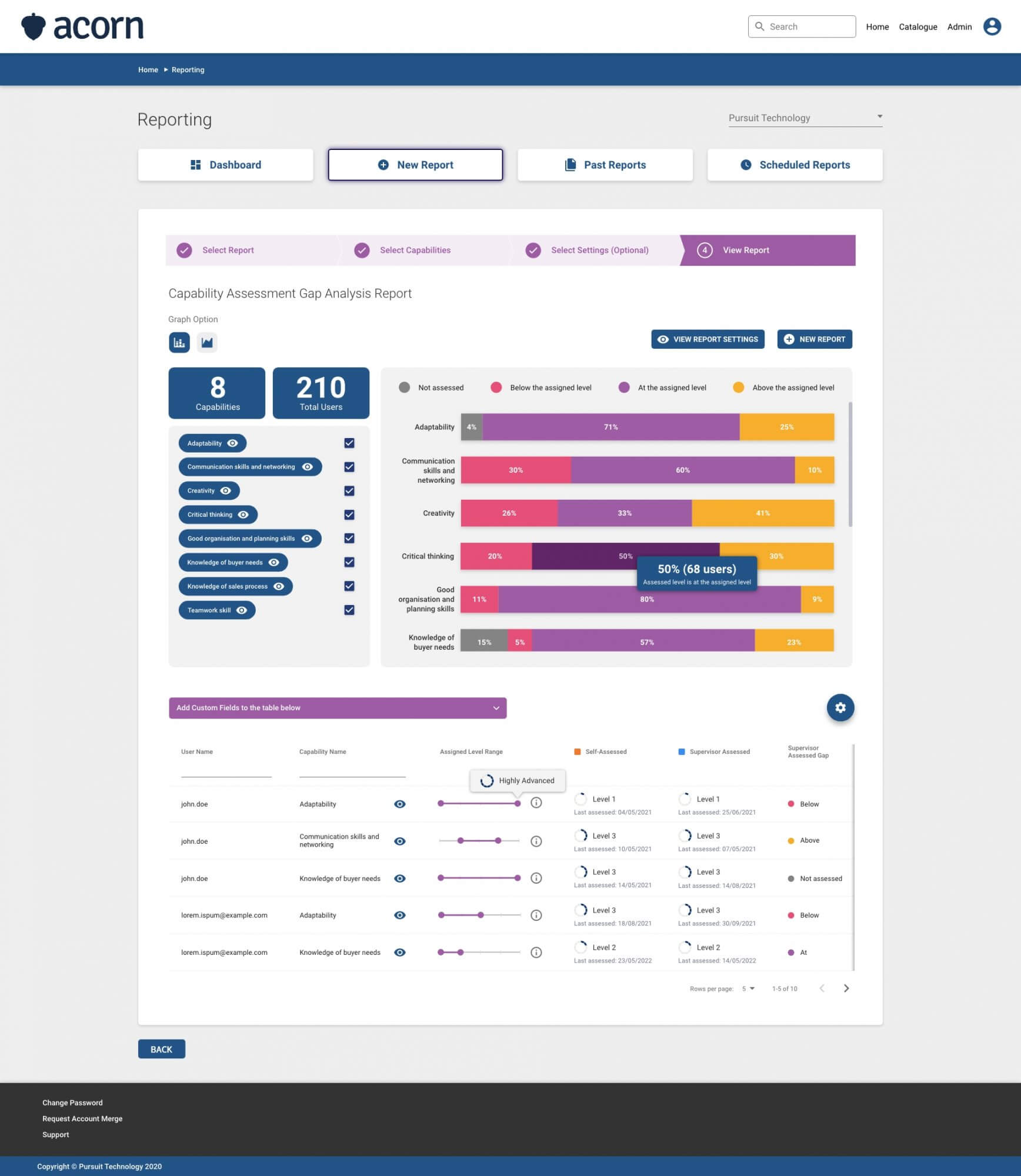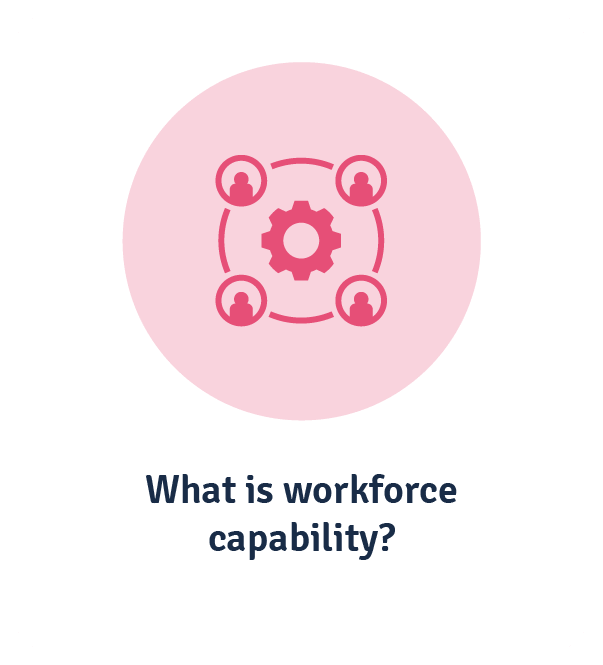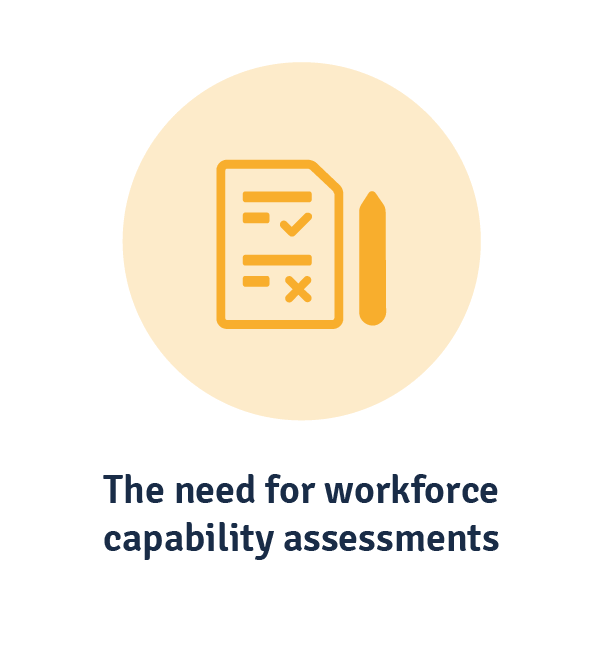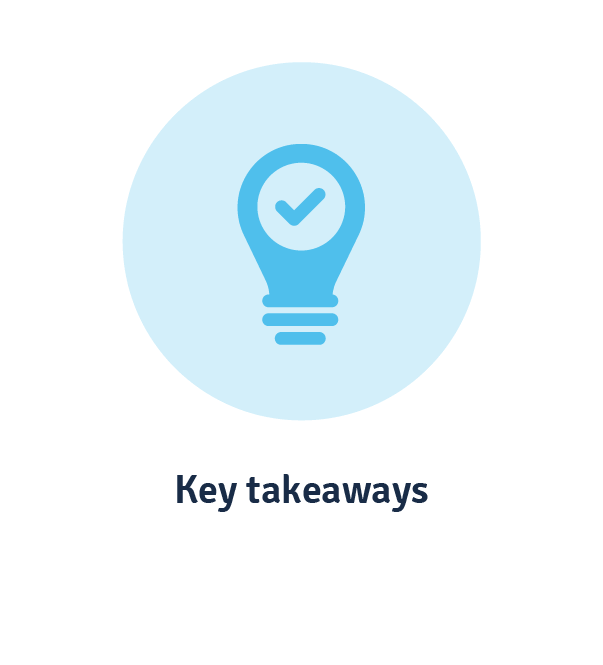While your workforce is the key to organisational success, it needs some guardrails in which to work efficiently and in line with your business’ mission and values.
Understanding the collective strength of your workforce capability can be done through a little thing called a workforce capability assessment. Think of it as further protection against capability gaps that can suddenly or insidiously impact organisational health.
In this article, we’ll walk you through exactly why you should consistently assess workforce capability and exactly how to do it.
What is workforce capability?
Workforce capability refers to the combined capacity of your employees to perform at an organisational standard. This may be defined as part of a workforce capability assessment or set by an existing organisational capability framework.
At the individual level, capabilities speak to a unique combination of skills, knowledge, behaviours and processes that inform the most optimal way to complete a task or perform in a role. Think of it as a common language between business strategy and employee performance.
What is workforce capability management?
This goes beyond simple workforce planning. It’s about understanding the availability and maturity of current workforce capability, in order to identify and mitigate gaps to achieve organisational goals.
In saying that, we can say there are a couple of key components to workforce capability management.
- Organisational health check
- Value building
- Employee performance.
The first two are derived through that third point, as well as related activities like:
- Capability mapping and prioritisation
- Capability building (i.e. training and development)
- Scenario planning
- Environmental scanning
- Learning and development
- Capability assessments.
The purpose of a workforce capability assessment
On that last point, an assessment of workforce capability seeks to answer questions like:
- Do you have the workforce necessary to compete in your market?
- Do you have the organisational capabilities to drive competitive advantage?
- Do you have organisational capabilities to solve defined business problems?
- What will you need in the future?
That information is crucial in many ways. Say your CEO thinks your organisation is already doing foundational capability building, or thinks it is too simple. The budget for priorities is spent elsewhere and skills gaps only become more insurmountable as they fester and compound. Value of organisational development then increases but the ability to prove long-term business benefits is impacted by the reactive nature of any development activities, which could tank your social equity and create negative perceptions of org development, L&D and HR.
These challenges are what lead us to pioneer the performance learning management system (PLMS). It’s the only solution that definitively links learning and performance by way of capabilities, enabling you to map, develop, assess and report on workforce capability all within the same system. That’s on top of providing contextual learning opportunities (given training is directly mapped to capability needs), so you can see tangible evidence of behavioural change rather than simple course completions.
We’ll digress. Capability building comes back to changing how work gets done by the workforce, whether that’s more efficiently, strategically or to a higher standard. Yet, at least 25% of employees don’t see improvements from training while 70% feel they need better development.
Ergo, a workforce capability assessment is not only a way to show continued value building through L&D, but also to ensure employees perform in a way that’s aligned with business outcomes and generates buy-in for strategic training amongst the workforce.
And again, without this kind of information, you’ll lack resources to understand:
- The relevance and timeliness of development opportunities (no matter how personalised)
- Urgent and emerging gaps in performance
- Behavioural change and transfer of learning
- Priorities for organisational development, whether that’s L&D or workforce planning.
Which only creates a vicious cycle of poor business alignment, negative perceptions of workforce development, low engagement and poor performance.
The tools to use for a workforce capability assessment
The best route here is to use digital tools, which have the key component of centralised data collection and storage. Particularly if you’re pairing assessments with competency-based training, you want to think smart and integrate your knowledge systems.
We’d recommend two options you may already have on hand (or you can easily implement):
- A capability discovery tool
- LMS reporting analytics.
Capability discovery tool
We’ve talked a lot about the capability discovery tool. It’s a rather astute way to collect assessment data on a large scale, while also engaging employees in the capability building process.
Essentially, you’d set up a website or portal within an LMS with a complete list of capabilities. Employees would then rate their performance on a scale of your choosing (e.g. foundational, sound and advanced), or managers would review an employee’s performance.
The tool then generates a report for the employee and/or manager that breaks down the level of competency employees perform to in any given capability. Depending on how you set the tool up, these reports could also be stored centrally for L&D and organisational development teams.
What makes this so helpful is that you can zoom in on potential pockets of gaps. Considering a workforce capability assessment is about the performance of the workforce, this visual shows timely insight into performance outcomes.
LMS reporting analytics
You may be surprised to find this here, right? After all, LMS reporting and analytics traditionally takes a retrospective look at the performance of learning and development. Think completion rates and satisfaction scores.
Well, modern LMSs are more holistic in solving business priorities—which is where assessing workforce capabilities comes into play. The point is to assess capabilities and report on them in advance of learning, so you know where to target learning to begin with.
By this, we mean that your LMS offers:
- Capability discovery and definition
- Capability assessment
- Capability gap analysis reporting.
The added benefit is that any data pulled has a direct connection to training plans, meaning that gaps in knowledge are both evident in real time and easily remedied.
Say you have a learning management system that can show a capability gap analysis. You could narrow in on specific capabilities—those that have been flagged as critical by forecasting, as an example—to understand the level of competence (aka maturity) those capabilities are being performed at by your workforce.

While this is high level, it doesn’t sacrifice nuance or detail. In fact, it encapsulates the information you need to see the spread of capability maturity across your workforce, as well as when maturity and proficiency have been assessed.
The best advantage is that you’re also able to create learning paths that directly match capability and competency gaps, with content that is already mapped to said capabilities and competencies.
Key takeaways
Without continuous workforce capability assessments, you’ll find that you’re lacking verifiable insight into:
- Emerging capability gaps
- The breadth of said gaps
- Business impacts of training
- Priorities for investment
- High-value generation roles and functions.
Utilising tools like eLearning reporting analytics and a discovery tool gives you access to tangible data, with the added benefit of linking organisational development activities directly to specific capability and competency gaps.
All in all, that gives you a better EVP for employees through training and development, and greater proof of the business impact of L&D and capability building.
Related Reads on This Topic

How to Conduct a Leadership Capability Assessment
Capability assessments are the key to more effective leadership development. Learn how to conduct one in line with org development strategy…

Why Learning Needs to be Co-Owned by HR and Business Units When Building Organisational Capability
Learn how learning co-ownership between HR and business units is the first step to building organisational capability…

How to Run an Organisational Capability Assessment for Your Business
Organisational capability assessments can measure the proficiencies of capabilities within your business. Read more to find out how…



